LILY EXPLORES Ten Transgender Manga
Hi everyone!
Recently, I’ve been reading a TON of different manga centered on transgender characters. I have a long, long list of recommendations collected from a bunch of different sources, and I’ve found some incredibly good stories among them. I’m writing this up to dissect each one: what it’s about, what I liked, what I disliked, and how it surprised me. I hope you can find an enticing read or two from this list. It would make me incredibly happy to know someone discovered a new favorite here!

Here are the series I’ll be talking about:
- Double House
- Stop!! Hibari-kun
- Four Sisters From Today
- Boys Run the Riot
- Wandering Son
- No Bra
- Our Metamorphosis
- I Wanna Be Your Girl
- Love Me For Who I Am
- Until I Become Me
All of these, save one, focus centrally on transgender characters. They overwhelmingly feature trans girls and women, although trans boys, nonbinary people, and other gender-nonconforming characters are included too. There may be spoilers, but I’ll try not to give anything TOO important away. I’d highly recommend reading *almost* all of these, so if you're the type who prefers to know nothing going in, do it! Also, some of these contain nudity, and some have upsetting themes & imagery, so please do your research beforehand if you’re worried about that kind of thing.
With that all out of the way, let’s bounce!
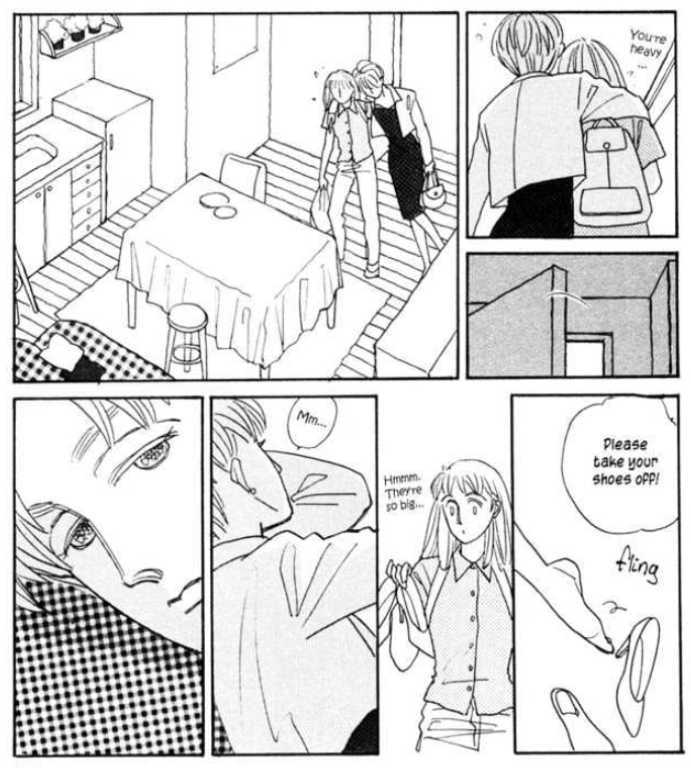
Double House
Nanae Haruno (1998)
Double House is a very short little story - just three chapters - about bar hostess, Maho, and new neighbor / family disappointment, Fujiko. Maho steps in when she sees Fujiko being harassed on the street, and the two become quick friends. From there, we see and hear more of their stories and dreams, such as Maho’s worries about her body, looks, and future prospects, and Fujiko’s desire to live free from her overbearing family.
This one’s really good, and it’s a quick read! I really like a few things here - the first is, unlike a lot of manga with hyper-cute trans protagonists, Maho’s design is more honestly transgender. She’s tall, with a sharp jaw and broad shoulders, wearing traditionally beautiful, stylish clothing. Her realistic design fits the more grounded storytelling.
Double House has such an understated art style that even the more intense scenes feel like they’re being whispered to you. I like how Maho’s dreamy malaise bounces so well off Fujiko’s forward and somewhat naive ideals, and I love the detail and attention to different outfits and hairstyles and how they’re used to silently express change. The only complaint I have is about the length - it’s over before you know it and one of the chapters goes pretty sideways, so don’t expect any sort of resolution here.
If you want a mature and somber trans short story, here you go! Double House focuses specifically on adult characters who are further in their transition, which might be a nice breather from the more common teen coming-of-age story that you’ll be seeing a LOT of on this list.
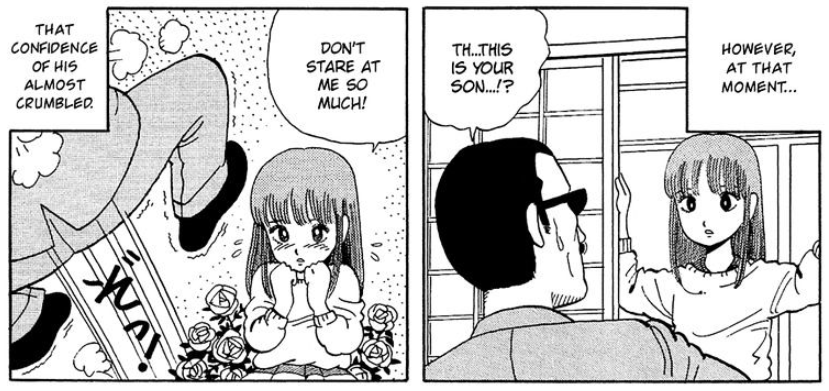
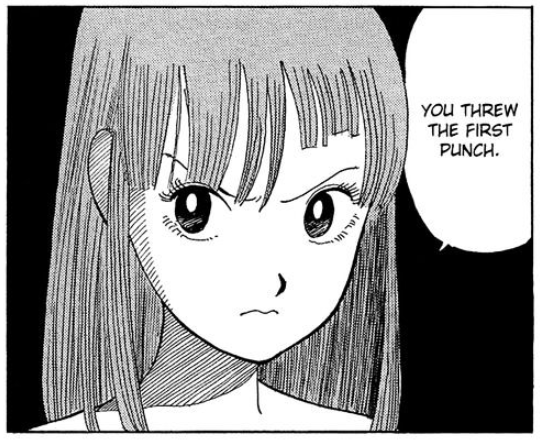
Stop!! Hibari-kun
Hisashi Eguchi (1981 - 1983)
Enough gravitas, let’s get into the silly shit. Stop!! Hibari-kun is a romance gag manga starring Ōzora Hibari, a fashionable troublemaker and teenage daughter of a yakuza boss. We follow the story of Kōsaku Sakamoto, who moves in with the family and quickly discovers that Hibari is transgender, while she develops a crush on him in return. There’s very little continuity, instead focusing on individual short stories about the two teens getting into various kinds of trouble. Every chapter deals with some new incident: the relationship between the Ōzora family’s four daughters and their overprotective father, their life as the world’s most comedic yakuza group, the bullies at school who want to embarrass Hibari or uncover her identity, and the endless stream of doomed love triangles.
I genuinely can’t stop talking about Hibari-kun. This comic is one of the most fun stories I’ve ever read starring a trans character, and I was hooked immediately. Hibari doesn’t have a tragic backstory or a sympathetic backstory; she doesn’t have a backstory at all. She’s a reckless trans girl who could almost be called perfect if she wasn’t also a huge pain in the ass. Hibari frequently creates conflict out of nothing just because she’s bored, and manages to solve it by either being perfect or by roping Kōsaku into embarrassing shenanigans. Anyone who mistreats her is immediately swept away by her self-confidence and light-hearted personality - she can turn anything into a joke, and her identity is never the target. As the story continues, there are tender moments and a growing acceptance of Hibari’s transness, but these are always left in the background of some new incident. Paired with all this are some truly funny jokes and creative visual gags, alongside a myriad of Japanese pop culture references and deprecating author self-inserts. Worth mentioning, it does suffer from a few stereotypical jokes.
I’m shocked at how unique the tone of Hibari-kun felt. It was such a wild experience reading a story that doesn't dip into the melancholy of being trans in a cruel world, or the idealistic positivity of a wholesome fairy tale, but still displays its queer characters so proudly. Several chapters are introduced with an illustration of Hibari showing off a new fashionable outfit and generally just hamming it up for the camera. Stop!! Hibari-kun is in love with its main character, and unleashes her for pointless fun without making her carry the weight of society. She makes me laugh, so I fell in love with her too. It's a shame the manga ended before its time, right as it started an arc with an incredibly shounen trans boy . . . unfortunately, we're unlikely to ever see a proper ending.
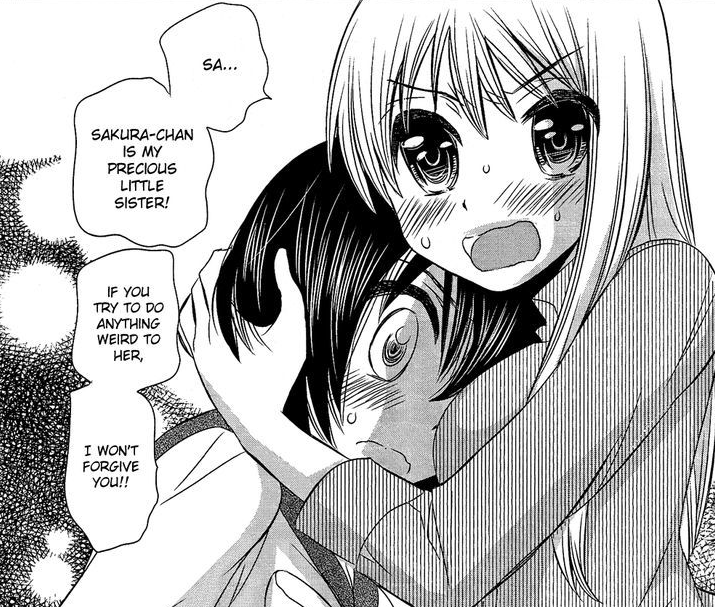
Four Sisters From Today // Kyou Kara Yonshimai
Nanki Sato (2013 - 2014)
Kyou Kara Yonshimai is a story about a family of three parentless sisters who miss their brother, gone off to college. One day, the brother returns home, except we find out she’s actually a trans woman! Woah!! Watch as each member of the family learns to grow and adjust to life with their new sister.
This one’s another short one, just fifteen chapters. It has a pretty straightforward opener that flirts with being cliché - you know, the family sporadically yelling, "I don’t get this! I can’t accept this!" and being invasive and defensive, while Kashiwa (the trans woman in question) tries to calmly explain her situation and bring life to a peace. And if that’s all this manga was, it would be forgettable. But each sister is truly her own character, and the exploration of the relationships between them gives Kyou Kara Yonshima a surprising depth and realism. As it continues, the story bends away from the shock value of Kashiwa’s transition to observe how her return exposes the faults in the family’s dynamics. By the end, I was hooked by the air of melancholy hovering over them. The art style is messy and a little off-putting at times, and there’s at least one very obnoxious character, but the good parts are good. Suffers from a few more tropes than others on this list, but it’s warm and cozy, like a big sweater.
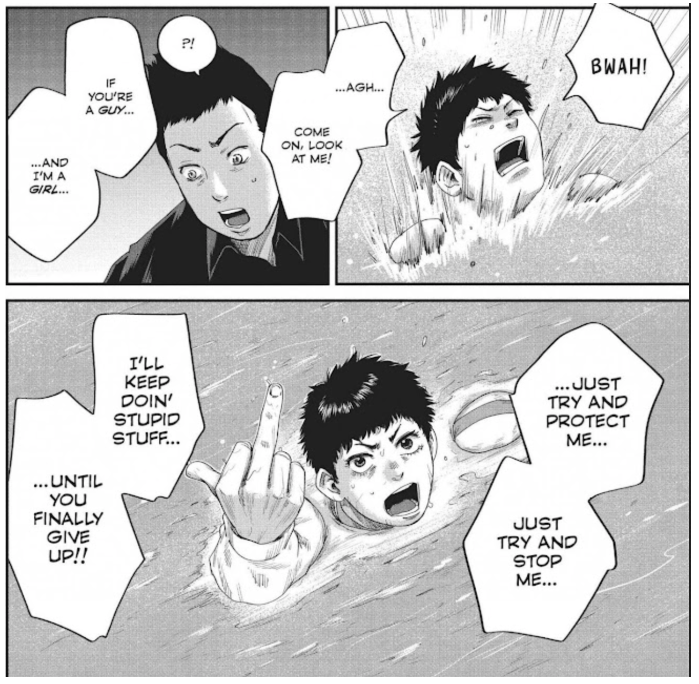
Boys Run the Riot
Keito Gaku (2020)
Ryo Watari is a quiet and obstinate transgender boy who really wants to be cool and flirt with his crush. Still not open about his identity, he meets Jin Sato, a punk who shares Ryo’s love of men’s street fashion. Jin convinces Ryo to start an indie clothing brand with him, and together the two are determined to shatter the world’s expectations. Through havoc, graffiti, and guerilla marketing, they force everyone to hear their souls.
The only manga on this list to focus specifically on a trans boy, Boys Run the Riot is both angry and incredibly fun. Ryo’s punchy personality is hard not to love, and Jin is the perfect catalyst to spark his passions - the two are all wide grins and shitty attitudes and they truly just kick ass. A feeling of dissatisfaction and rebellion runs underneath the whole series: it’s hard not to get pissed off alongside Ryo when an employer fakes a half-assed understanding of his masculinity, or a coworker ruins their bro-time by suddenly treating Ryo as a woman in order to hit on him.
Boys Run the Riot is definitely the most modern-feeling of the manga I read. We see the love behind Japanese street fashion and indie creation as Ryo and Jin learn to screen-print shirts and coerce others into helping them. Social media is a core component of the story. The tenuous relationship between queer influencers and a needy audience is explored, as are the difficulties of monetizing your identity. It’s another manga that features a detailed, gorgeously realistic art style, with much more genuine designs for its transgender characters.
This manga is a blast! It ended much sooner than I wanted, but reading it gives me a lot of hope for future trans manga. A knuckle-down brawl of fashion and rebellion.
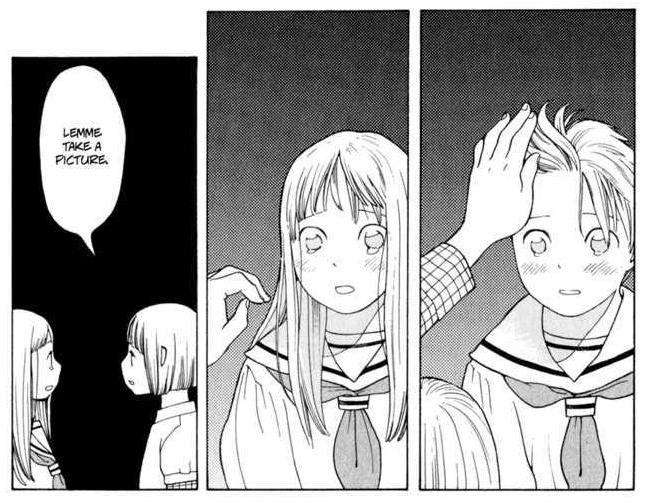
Wandering Son // Hōrō Musuko
Takako Shimura (2002 - 2013)
Wandering Son is a 15-book series following the life of two kids: Shūichi Nitori, who wants to be a girl, and Yoshino Takatsuki, who wants to be a boy. We find them fighting the onset of puberty and dysphoria, falling in love, and finding the strength to embrace themselves.
Ah, Wandering Son. As far as I can tell, this is the most widely-known series on this list, with Stop!! Hibari-kun coming in a distant second, and like Hibari-kun, it's the only other series to be adapted into an anime. Wandering Son is a slow and meandering burn, lasting over 120 chapters, and it focuses on the growth of our heroes through several years of middle school to adulthood. The mood is consistently quiet and measured, and even the loudest outbursts feel subdued thanks to Shimura’s gentle illustrations.
While the plot truly does wander, it’s the characters here that are easy to love. Shūichi and Yoshino travel different paths, occasionally ricocheting off each other and spinning into new territory. Shūichi is just the softest child, frequently crying or going silent when she’s stressed, while Yoshino grapples and angrily rejects his oncoming femininity, then tries his best to adjust to it. The wide cast of characters here is unique and loveable: I love Saori’s miserable nihilism, Maho as a quarrelsome but kind sister, and trans mentor Yuki. Wandering Son is willing to break away from the teen drama to show us the lives of transgender adults, which is a welcome change of pace. The series spends a lot of time in the heads of its characters, and isn’t afraid to spend several panels just on facial expressions - a big part of why it feels so painfully real. And Shūichi's quiet, wide smiles when she has even the flimsiest excuse to wear the clothes she wants . . . gah, that hits home. Somehow this series manages to squeeze in no less than three gender reversal plays! Three!!
Wandering Son is most unique in that it is just so damn big, and because of this it can reveal something we don’t normally get to see: transgender desires flickering, expanding, and enveloping someone who’s forced to fight it over years. Seeing characters embrace themselves through the layers of impressed shame and self-hatred, and finally finding a way to live; that’s what Wandering Son brings. The ending isn't depressing, but it is melancholy, and it may not be what you want - it’s like the quiet snuff of a candle almost out of wax. That said, this manga is an understated classic, it brought me to tears at least twice, and it’s definitely worth a read.
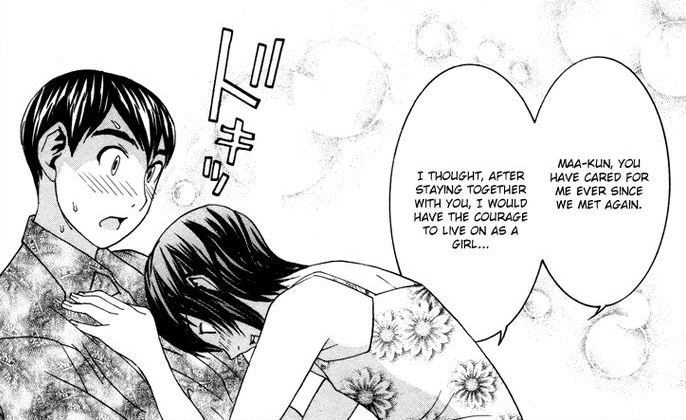
No Bra
Kenjiro Kawatsu (2002 - 2004)
No Bra is a romance/harem gag manga about an average teenage guy, Masato, who is surprised one day by a beautiful girl named Yuki lounging in his apartment. She’s a childhood friend who’s decided to live with Masato and rekindle their relationship. He instantly falls for her, but is shocked when her mom calls and reveals that she was actually born male. Masato struggles between his crush on Yuki and his classmate Kaoru, the popular girl who falls in love with him despite Masato’s belief that Kaoru is out of his league.
I . . . didn’t like No Bra. I stumbled into it as a "related read" after reading Kyou Kara Yonshimai, but it can’t hold a candle to anything else on this list. Sure, it’s a harem story, but it’s also a totally bland harem story. Women throw themselves at Masato and all sorts of predictable horny shenanigans fall into his lap, but Masato himself is a brutally generic main character with barely a mote of personality: he lacks self-confidence, he yearns for love, and he wears Hawaiian shirts. As you might guess, it uses Yuki’s transness as a cliché "forbidden fruit" - she’s so beautiful! But she’s a boy! Oh no! Her character rarely acts and adds little outside of being an outlet for flat jokes and sex goofs. Other characters include Kaoru, the best girl in class, and Mariko, a teacher who decides to live in Masato's apartment to leech off the rent. Yuki has a couple of sweet moments as the story goes on, and there's a cool little sideplot exploring her past, but it’s over 40 chapters long and . . . jeez, it’s just not worth the monotonous characters and plot. Look, if you like this kind of comic, please enjoy it, but even as a harem manga it’s so dry. Not recommended! Sorry! Maybe I shouldn’t have bothered mentioning it?
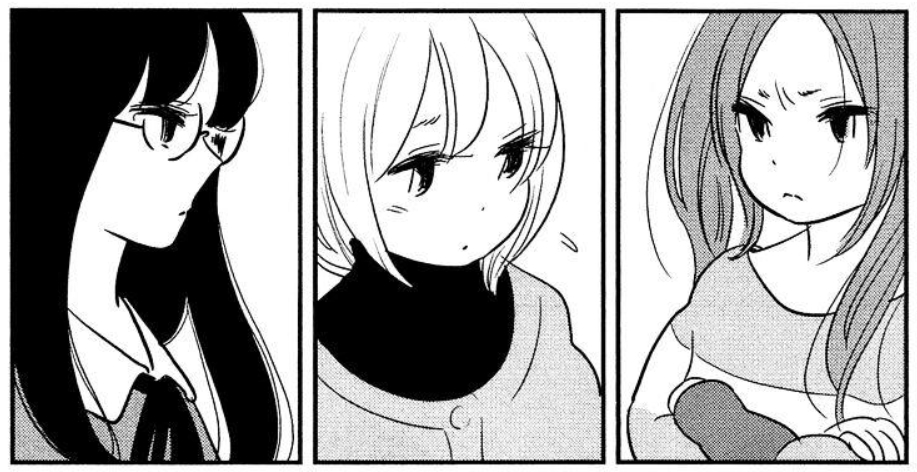
Our Metamorphosis // Bokura no Hentai
Fumiko Fumi (2012 - 2015)
Bokura no Hentai is a story about three young teenagers who meet up in real life after becoming friends on a crossdressing forum. Marika is a trans girl who wants to be a princess, Parou is a gay boy who wants to hurt and be hurt, and Yui is a lonely brother who isn’t sure what he wants at all. Their initial meetup creates a tenuous relationship, and becomes the catalyst for their growth as they tackle their traumas, teenage anger, love, and gender. This story contains some intense and possibly uncomfortable sexual elements, so be warned.
Out of all the manga in this list, Bokura no Hentai cut my heart the most. Like Wandering Son, it covers the growth of high schoolers over several years as they traverse puberty and explore their own desires and identity. It took a book or two, but I grew really attached to this mess, and once it grabbed me it held tight and eventually tore me to shreds.
This manga feels unique as a teen drama for a lot of reasons. Though there are plenty of painful conversations, there’s just as many scenes that convey difficult feelings through the illustration alone. Sex and desire is a recurring element, but is never used as lazy titillation or idealistic romance. It feels . . . honest. We see the multitude of reasons a person might have sex: love, lust, self-worth, self-hatred, cruelty, loneliness. It’s also the rare story capable of distinctly navigating the differences between crossdressing, homosexuality, and transsexuality, and rather than discussing these in an empirical way, it explores them through realistic character moments. The attention to personality and growth isn’t limited to the main trio either, it's shared among a large cast of troubled teenagers, and the series isn’t afraid to spend full chapters on side characters. Even Marika’s childhood friend Akane, initially an unfailingly positive goofball, comes to reveal surprising depth.
I want to look thoroughly at our three starring characters, which means I’m going to spoil some of their story. If you’d like to read Bokura no Hentai with fresh eyes, skip this part. This is my favorite series on this list by far, and my words won’t come close to reading it for yourself.
Marika begins the story as an overly cute and naive princess dreaming of her prince, believing true love will confirm she is really a girl. At first glance, her design shares a lot in common with Shūichi Nitori from Wandering Son: a perfectly innocent and feminine trans girl, like one of those kids forced to justify their own existence in front of Congress. I wasn’t a fan of Marika to start - her fantasies of being a princess are portrayed as so delusional and childish (even jumping into a glossy shoujo style as she begins talking to her stuffed animals) that she’s hard to take seriously . . . until it’s made clear that she’s very aware what she’s doing, and knows she’s growing desperate.
Suddenly, Marika’s situation was much more understandable; her saccharine dreams are the only way she knows how to process her down-to-earth desire to transition. She's forced to mature. As she enters male puberty, she grows blunter and colder, endures harm and self-hatred, and only in that stage of hopelessness (and with the support of her friends) is she finally able to begin transitioning physically and socially. I can imagine a lot of transgender readers relating to Marika and her attempts to endure her identity, rather than embrace it.
Yui - actually, Ryousuke - is the standout from the three, being neither trans nor gay. He crossdresses for a very specific purpose: to give his mother something to live for after his twin sister Yui suddenly passes away. By pretending to be Yui at home, he’s able to stave off his mother’s mourning. He’s cruel to Parou and Marika at first, but soon admits that he wanted to meet up with the others in hopes they could bring him some comfort. Again, I didn’t care for Ryousuke at first. His situation sounds like more of a ridiculous gimmick than an actual, believable problem, but over time it’s clear that his reasons for crossdressing are more complex than he claims. I connected most with Ryou’s fear of true confrontation. Learning to handle the flaws of your parents is another ongoing element of this series, and even if Ryou’s situation feels unrealistic, the emotions it conveys are honest.
Finally, Parou, by and far the most complex of the three. He initially comes across as very mature with his inspiring and gentle demeanor, but he hides a monstrously cruel streak that tears apart the group again and again. Bokura no Hentai shows how a person can act a dozen different ways while still hiding what’s really bothering them. Parou is kind and intelligent when he wants to be. He’s hateful and aggressive when he wants to be. He’s pathetic and withdrawn when he wants to be. He has a cold, fatalistic view of the world, a result of being both abused and ignored as a child.
Parou is the most openly sexual character in the series. He frequently sleeps with the pathetic upperclassman he loves despite the latter’s callousness, then takes this so-called maturity and forces it onto others. He attempts to pressure both Marika and Ryousuke into sex, the former in order to punish her naivete, and the latter as a result of both his love and self-hatred. He yearns for someone who can really understand him and still care for him. Watching Parou constantly put himself in bad situations on purpose, watching him lash out on others to share his own pain, and Parou is way, way too relatable. Please be okay, okay?
This series made me absolutely bawl, and I held it so close, wishing for some happiness for these sad fucking kids. If you can handle the cold and cruel parts, I cannot recommend it enough. It’s a series I’m going to come back to again and again.
Ya dig my apple?? Read it. Read it!
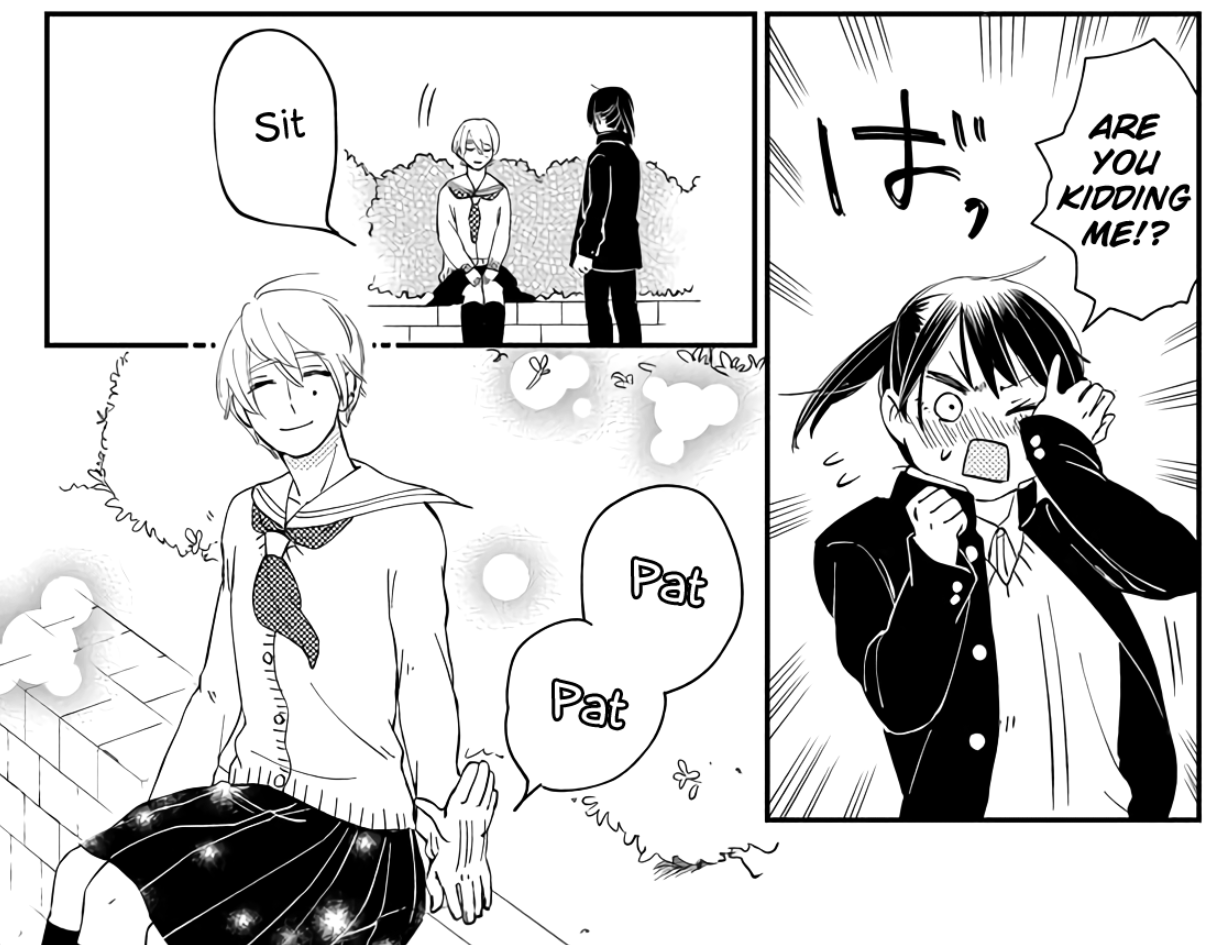
I Wanna Be Your Girl // Kanojo ni Naritai Kimi to Boku "Kanoboku"
Umi Takase (2018 - 2020)
The demure Akira Yonezawa and the easily-riled Hime Sakuragaike are childhood friends, and they’re entering high school. As Akira faces the inevitable pushback of being an openly trans girl, Hime decides to don a boy’s uniform in solidarity. They make new friends and struggle to find out where their hearts really lie.
I Wanna Be Your Girl is another manga that portrays its trans characters with more realistic proportions. I hope it’s not annoying that I keep pointing this out! So many manga design their trans characters identically to their cis counterparts, depicting them as typically cute or gorgeous. While manga art is obviously highly stylized and I can appreciate the artists’ intentions (or fears), it can be refreshing to see honest depictions of our bodies, our anatomy, and our reality.
Anyway, to the story! I Wanna Be Your Girl is cute and lighthearted. The stakes are low and the characters are fun, filled with complex and heartfelt motives. Akira deals with the issues you might expect, like trying to find love as a trans girl in a cis school, while Hime grapples with her femininity and the presumptions of others. It is a little bit . . . on the nose at times, to the point where it can feel preachy, especially when their mystery teacher appears for a well-timed advice bomb. I also found it a little less memorable than other similar stories - it doesn’t have the unique situations and large cast of Wandering Son, nor the gut-wrenching turns of Bokura no Hentai. That said, it’s still a nice little journey with some fun characters - I can't ignore a good lesbian punk - and I’d recommend it if you want to check out something less melancholy.
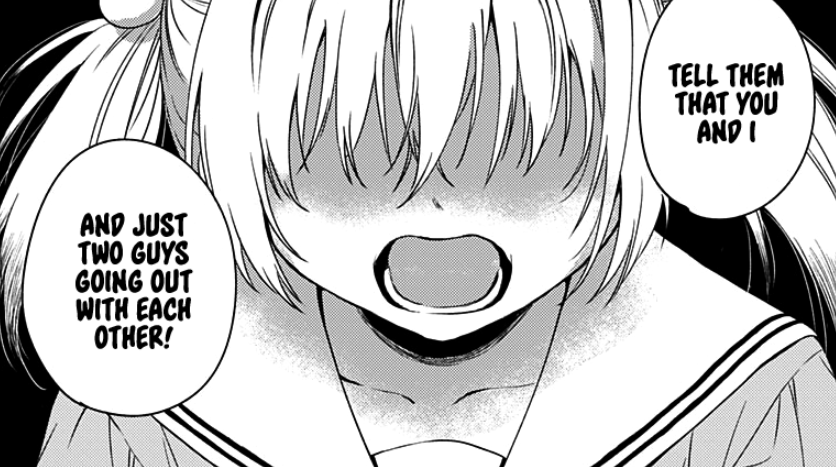
Love Me For Who I Am // Fukakai na Boku no Subete o "FukaBoku"
Kata Konayama (2018 - 2021)
A sweet and sour story about a queer cafe! Mogumo is a nonbinary high school student who has shut themselves away from others, until Tetsu decides to invite them to his sister’s unique cafe. Mogumo begins working at Question!, a maid cafe that employs teenagers who need a place to express themselves. Part relationship drama, part slice-of-life, part queer-coming-of-age, and all very cute.
Look, I’m pretty fast and loose with the word "cute", but "Love Me For Who I Am" is without a doubt the highest-level cute on this list. More than one chapter is dedicated to the waitresses delving into cosplay for a special event at their cafe and discussing their personal fashion preferences, a nice respite from the slice-of-life drama. While it gives off the initial vibes of a gazey romantic wish-fulfillment manga, and the cover art is almost too saccharine for words, underneath those trappings is a real story about a distressed kid trying desperately to hang on.
The first half has Mogumo meeting new friends across the gamut of queerness as they adjust to life at the cafe and slowly open up. I think this is the first manga I’ve read starring a nonbinary character, and it’s definitely the first one I’ve read to set a chapter at a pride festival - almost certainly a result of being much more modern than other entries here. Mogumo is easy to like - despite their childish appearance, they're prone to sullenness when their identity is rejected, and we see them fight back nihilism again and again. The back half of the series takes a turn for the serious as Mogumo begins to confront their past, their depression, family cruelty, and self-harm. The sharp tonal shifts between cheery and dark was a bit disorienting, but the willingness to show both is what made me connect with Megumo. A sugary cake with some very bitter notes. I liked it!
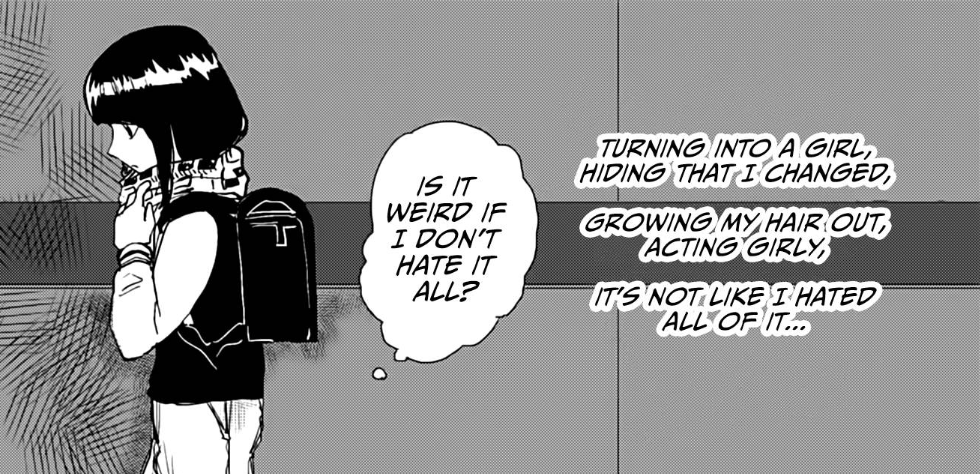
Until I Become Me // Ore ga Watashi ni Naru made
Satou Hatsuki (2018, ongoing)
Akira Fujimiya is an 8-year-old bully who remorselessly picks on the girls in his class. One day, he comes down with a rare disease and wakes up as a young girl. Confused and upset, Akira rejects their situation, but slowly adjusts to life as a girl. We watch them grow into a teenager, all while learning how to get along with girls, make new friends, understand love, and become a kinder person. This is a story about a young boy learning to become a young girl.
Okay, this one’s the exception. Until I Become Me is not really a story about being transgender. It takes gender-swapping, a concept often relegated to comedies, sci-fi, and very specific porn, and applies it to a coming-of-age story. It has a simple, messy style, but unlike Kyou Kara Yonshimai, I find the art really endearing. Though it doesn’t focus specifically on trans characters, there are quite a few moments that sync up with common transgender experiences. As Akira grows up, they start to question their desire to return to life as a boy. They worry about being a burden on their family and friends. They realize that being a girl doesn’t mean they have to concede every part of their masculinity. Against their mother’s conservative insistence, they begin to accept and even embrace their new life, choosing to dress more femininely and going to a traditional school instead of one where they can live as a boy.
Overall, I found this comic incredibly cute! I really, really dig it, and I’m excited to see where it goes. Regardless of the very different trajectory, Until I Become Me is a story about gender expectations and acceptance; it feels like a long walk on a soft beach.
Scattered Thoughts
Whew!! There truly is a ludicrous amount of manga out there. Some of these series are incredible, and at least three of them made me cry. I had a lot of fun finally diving into the pile and seeing what I could find.
Oh, did you think we were done? Sorry, I still have a lot of random sparks floating up there. Let’s chat!
It was fun tracking the evolution of transgender characters in manga over the years. Older manga tends to approach transness emotionally, and characters often express themselves with poetic, ethereal pleas. It’s rarely named - it’s a simple, "I want to be a woman" or "I want to be a man". Newer manga describes identity through a slightly more logical eye. It often contains a modern understanding of gender, acknowledges the long-standing existence of LGBT communities, and can contain very literal, scientific descriptions of trans and queer labels. Still, the emotional element is never lost, and scenes depicting inner conflict and heartfelt desires are a given.
The older the series, the less likely you’ll see the word "transgender" and instead see words that we usually translate to "crossdresser" or rarely "transsexual", though this comes from Japanese phrases with their own unique (sometimes negative) connotations, such as "okama", "nyūhāfu" and "otokonoko". Newer manga is more likely to use less loaded terms, such as "transgender" and "gender identity", although it depends on the genre and intent.
"I have the body of a boy, but the heart of a girl" is still a notably common refrain across all of these stories. Despite being a bit reductive, in some ways I still really like the poetic simplicity of this phrase. It’s a useful method for introducing cis people to the idea, even if it lacks nuance. Another specific element that came up again and again was the schoolboy’s uniform, the gakuran, with trans girls often comparing it to funeral clothes and complaining about the stiff collar; school uniforms are basically guaranteed to come up in any transgender teen manga.
If a manga contains a transgender character, it’s still most likely to be a trans girl or woman. Transmasc and nonbinary characters are quite rare, though newer manga like Love Me For Who I Am and Boys Run the Riot suggest they are becoming more common. Nonbinary characters are almost guaranteed to be assigned male at birth. Protagonists are also incredibly likely to be young: only two series on this list star characters who’ve left high school, though older side characters are pretty common. I think we’re really likely to see all of this change and become more diverse over the next decade.
Finally, the end . . !
You really read all that, huh? Thank you so much for joining me!! Writing this up was a nice chance to recollect and see how I felt about these stories in the aftermath. I had a lot of fun with these series, and I hope you found one or two you might want to check out yourself! If you like, please share this article with your friends.
I still have quite a few manga in my backlog with trans characters, like Family Compo, Fire Punch, Ai no Shintairiku, and Yuureitou. Maybe I’ll do a follow-up post after I’ve read through a few more series. I’ve also found some incredibly good yuri recently . . . I wonder if people would be interested in more exploration?
Until next time 💜
Lily
@ItsMeLilyV